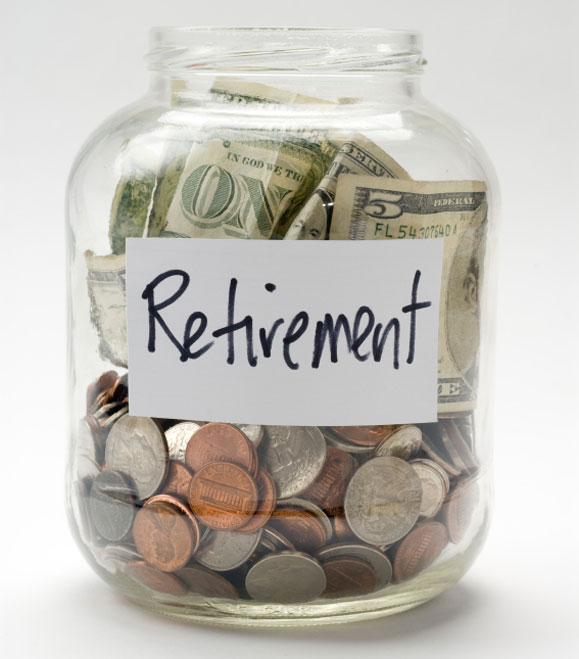BEFORE YOU TOUCH YOUR RETIREMENT PLAN SAVINGS, READ THIS!
Are you thinking about dipping into your IRA or 401(k) savings? Do you have bills that need to be paid, projects you want to complete, or do you need funds to start your new business and your qualified retirement plan looks like it has everything you need to do so? Before you contact your plan administrator to begin the paperwork on issuing you an early retirement distribution, please note the following risks and consider that other, more preferable options may be available to you.

Your qualified pension plan is one of the most highly protected assets you have. One of its benefits is that it is immune to creditor claims. While voluntary retirement contributions are not deductible on the Chapter 7 bankruptcy means test, mandatory contributions are and any contributions made prior to filing bankruptcy are excluded from the bankruptcy, with a few rare exceptions regarding IRAs and Roth IRAs. This means that by taking an early distribution you are moving an asset from a secured position to an unsecured position.
Earnings on retirement accounts grow tax deferred. Investing money after retirement can also provide a source of income that is taxed at a lower rate, potentially allowing retirees to maintain their lifestyle without incurring a significant tax burden. What this means is that you are building wealth and growing your equity without having to pay current income tax on that growth. You are keeping more of what you have earned today. The moment you take that distribution you trigger federal income tax at your ordinary income tax rate. Not only are you incurring an immediate tax liability, but more likely than not you are paying income tax at a higher rate than if you had deferred the distribution until retirement. Retirement distributions are intended to offset reduced cash flows when you are no longer working and are therefore often taxed at lower rates than what you pay while employed. Early retirement distributions get added to your current year’s earnings and can push you up into a significantly higher tax bracket for the year and surprise you with an unexpected income tax liability.
 In addition to paying ordinary federal income tax on your early distribution, you will also be assessed an additional 10% penalty due when you file your personal income tax return for the tax year. This means you can pay as high as 49.6% in taxes and penalties on you retirement distribution. Almost half of your intended cash flow can go right to the government and not your intended purpose.
In addition to paying ordinary federal income tax on your early distribution, you will also be assessed an additional 10% penalty due when you file your personal income tax return for the tax year. This means you can pay as high as 49.6% in taxes and penalties on you retirement distribution. Almost half of your intended cash flow can go right to the government and not your intended purpose.
So what can you do? While qualified retirement assets seem like easily available cash consider other financing options such SBA loans or HELOCs. Yes you may have to collateralize the debt with personal assets, but consider that you are already risking creditor protected assets when you take the distribution and conceding up front a significant portion to the IRS.
Look at your plan documents to see if it allows for loans against your retirement account. It if does, this is a loan that you easily qualify for, gets repaid to yourself and you get to keep the interest you repay, and is a non-taxable transaction unless you default on the loan. If the loan proceeds were used in your business, then you also get to deduct the interest expense in your business that you repay yourself.

If you only need the funds for a short period of time, less than sixty days, you could conceivably consider performing a once per year IRA rollover. This would take advantage of the sixty day period you have after you receive and IRA distribution to roll it over into another IRA account without incurring tax consequences for the distribution. During that sixty day period you may use the funds for whatever purpose you like as long as the entire amount is used to open a new IRA or contributed to an already existing IRA within the time limit. This is one of the more risky tools that can be used, because if the timing is off, a tax liability will be generated by the distribution.
Another option is to split the distribution needed over a multiple year period. If you do not need all of the money at once, this is a great tool for keeping you in a lower tax bracket by reducing the amount added to your ordinary income each year.
If you have to take a distribution from your retirement account immediately, consult your CPA first to see if you qualify for one of the numerous exceptions to the 10% early distribution penalty, such as hardship distributions, and to calculate the estimated tax effect from the distributions so taxes can be paid or earmarked immediately.







![Best Crochet Hooks for Beginners and Pros [2020 Update] best crochet books](https://www.awebtoknow.com/wp-content/uploads/2018/01/best-crochet-books-100x70.jpg)